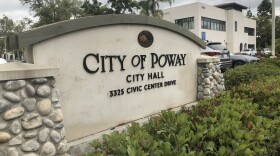Disaster response has been a top priority since 9/11, and a report released today shows San Diego emergency agencies are doing a better job of talking with each other than most during emergencies.
The San Diego region is one of only four major urban areas in the U.S. To earn top grades in the federal assessment. Washington, D.C., Minneapolis-St. Paul, and Columbus, Ohio also made the list. But how much has really changed since the devastating wildfires of 2003 when San Diegans saw a communication meltdown and an inefficient system? Federal grants to both the city and county have helped pay for upgrades to radio systems. More large-scale training opportunities are also helping different agencies to work together and avoid duplicating their efforts.
Tracy Jarman, San Diego Fire Chief: In the past, we’d have maybe one or two regional exercises every year. Today, we have on average 14 emergency drills that we conduct on a regional setting to deal with everything from natural disasters, to earthquakes, to airline crashes, hazardous material incidents and bioterrorism attacks.
A renovation of the city’s emergency operations center also plays a part in the improvements. Video conferencing and video downlink capabilities allow different public safety units to share information instantaneously. Undersheriff Bill Gore says improvements to communication equipment are expanding the reach and capability of a once stifled system.
Bill Gore, county undersheriff: We’re ten-fold better than we were in 2003 during the Cedar Fire as far as the coverage we have with our communication system, and the capacity to handle traffic.
Officials say there is still more work to be done. A $2.2 million dollar project is in the works to further improve communication between dispatch centers and public safety agencies.




